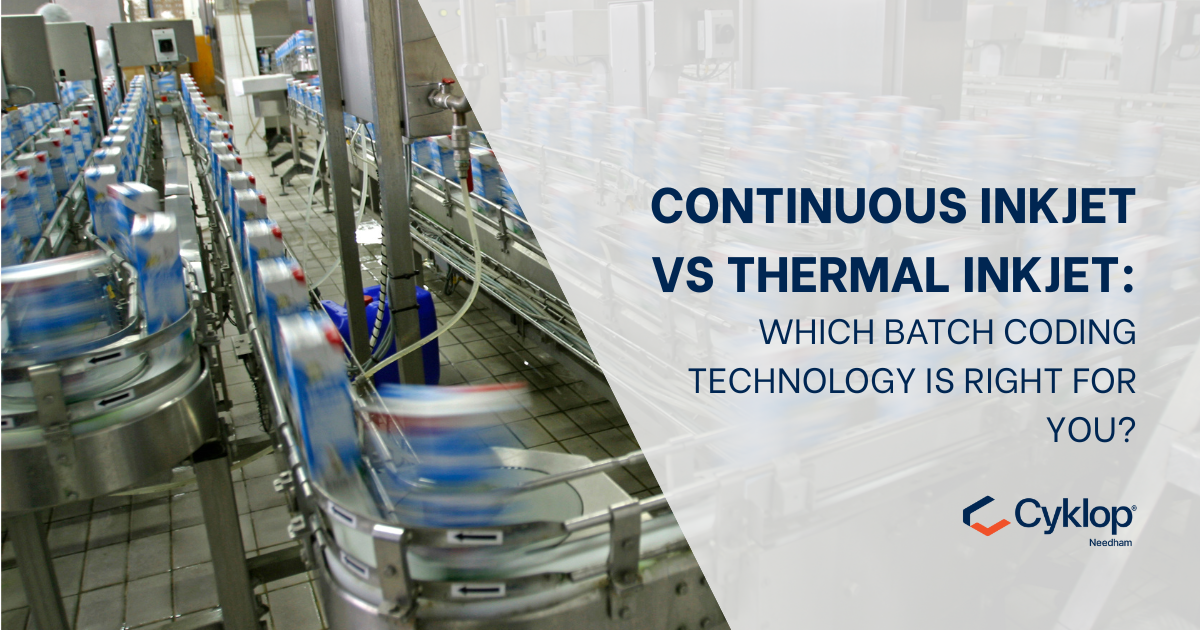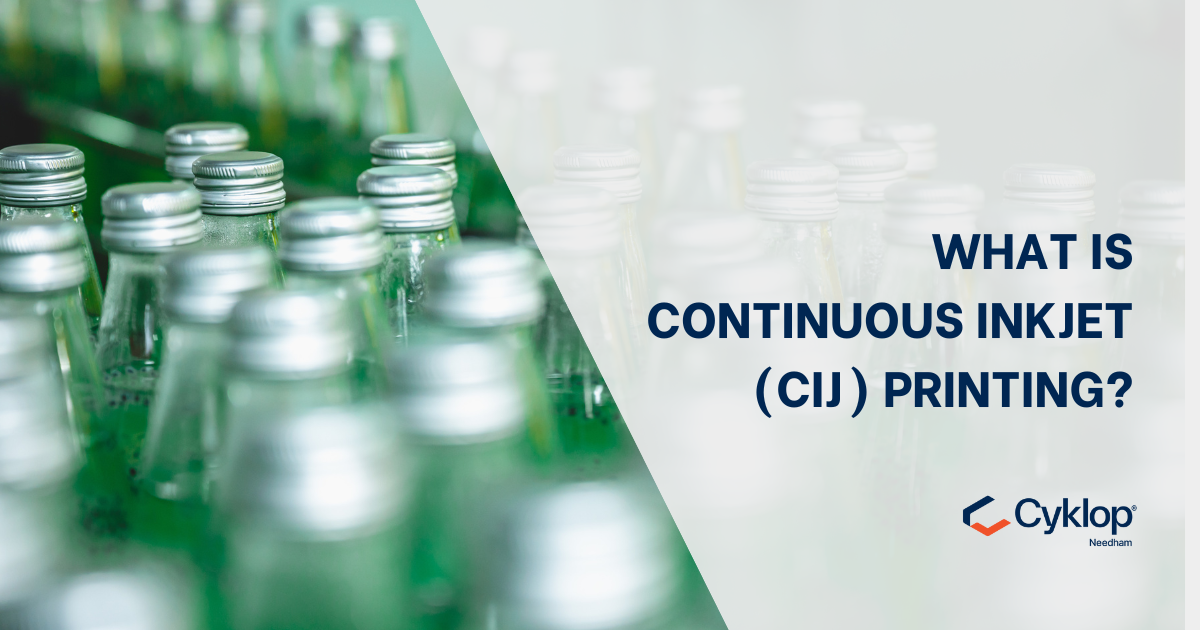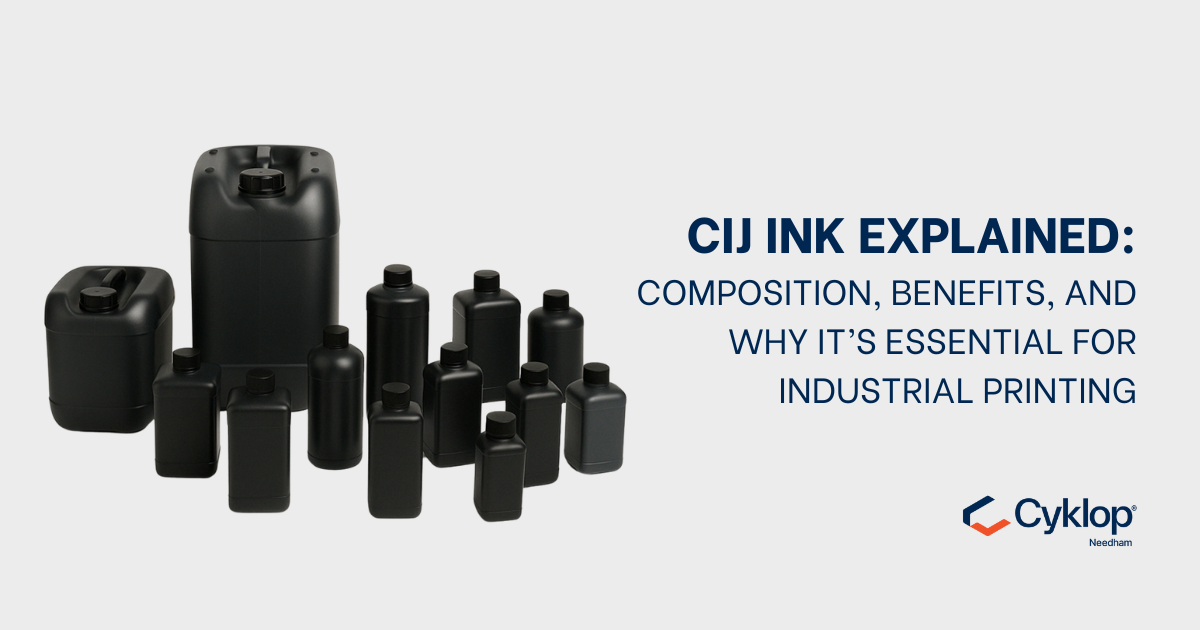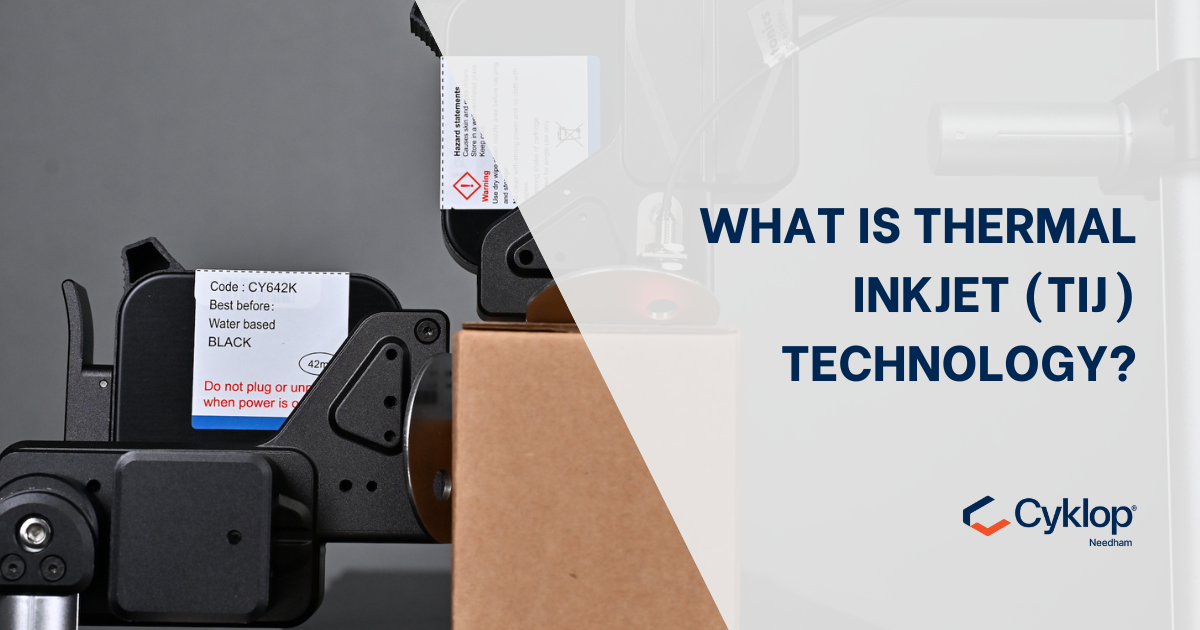What Is Continuous Inkjet (CIJ) Printing?
What Is CIJ Printing? While inkjet printers are a common sight in homes and offices, a different class of technology powers the industrial world—...
2 min read
Samuel Mcgarrigle
Dec 2, 2022 2:45:00 PM

When it comes to batch coding and product marking, manufacturers have a range of technologies to choose from—Laser, Thermal Transfer, Drop on Demand, and more. However, in recent years, Thermal Inkjet (TIJ) has made significant advancements and is now a serious contender against the long-established Continuous Inkjet (CIJ).
In this guide, we break down how CIJ and TIJ technologies work, where they’re used, and the key benefits of each—so you can make the right decision for your production needs.
Continuous Inkjet (CIJ) is a non-contact coding technology that uses a high-pressure pump to force ink through a nozzle, creating a continuous stream of droplets. These droplets are electrically charged and deflected by electrodes to form characters and codes on products.
Ink is pumped continuously through the printhead.
Vibration breaks the ink stream into individual droplets.
Charged droplets are deflected and directed onto the substrate.
Unused ink is recirculated back into the system.
CIJ printers are commonly used in industrial manufacturing environments, particularly for:
Expiry dates and batch numbers
Serial and tracking codes
Product identification on high-speed lines
Typical substrates include metal, glass, plastic, rubber, and curved surfaces like bottles, cans, pipes, and cables.
Non-contact coding: Ideal for fragile or irregular surfaces.
Flexible throw distance: Great for printing on curved or uneven materials.
High-speed printing: Perfect for fast-moving production lines.
Versatile inks: Supports pigmented, heat-resistant, food-safe, and solvent-based inks.
Proven durability: CIJ printers like the N-SERIES are built for harsh industrial environments.
Thermal Inkjet (TIJ) printers use heat to eject ink droplets from cartridges. When the ink is heated to around 340°C, a vapor bubble forms and forces a droplet out of the nozzle. Once the droplet is expelled, the bubble collapses, creating a vacuum to draw more ink.
Unlike CIJ systems, TIJ printers use cartridge-based ink, meaning there’s no need for bulk tanks or complex fluid systems.
TIJ printers are ideal for porous substrates, including:
Paper and cardboard packaging
Wood, fabric, and other absorbent materials
Lightweight materials used in construction, furniture, or textiles
TIJ excels in producing sharp, high-resolution text, barcodes, and graphics.
Low maintenance: Fewer moving parts, no messy ink tanks, easy cartridge changes.
Cost-effective: Lower upfront and operating costs—just replace the cartridge.
High resolution: Clear, legible prints at high DPI—ideal for small text and barcodes.
Compact and portable: Small footprint makes it easy to integrate into tight production spaces.
Eco-friendly: Lower emissions and reduced ink waste compared to CIJ.
| Feature | CIJ Printing | TIJ Printing |
|---|---|---|
| Speed | Ideal for high-speed lines | Suitable for medium-speed applications |
| Maintenance | Requires regular cleaning & upkeep | Minimal maintenance, easy to operate |
| Print Resolution | Good for basic codes | Excellent for detailed prints & barcodes |
| Substrate Types | Great for non-porous, curved surfaces | Best for porous, flat surfaces |
| Mobility | Larger, fixed installations | Compact, mobile, easy to reposition |
| Running Costs | Higher due to ink and system servicing | Lower with cartridge replacement only |
Choosing between CIJ and TIJ coding technologies depends on your specific production needs, substrate types, and budget. At Cyklop Needham, we’ve spent decades helping manufacturers select the right equipment and consumables to optimize their operations.
Speak to Our Sales Team Today
📞 Call: +44 (0)1948 662629
📧 Email: enquiries@needham-ink.com


What Is CIJ Printing? While inkjet printers are a common sight in homes and offices, a different class of technology powers the industrial world—...

Introduction: The Power Behind Continuous Inkjet Printing In the world of industrial printing, Continuous Inkjet (CIJ) technology stands as a pillar...

What Is Thermal Inkjet (TIJ) Printing? Thermal Inkjet (TIJ) is a non-contact coding technology that uses heat to eject ink droplets from a cartridge...